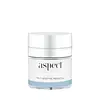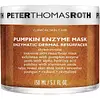What's inside
What's inside
 Key Ingredients
Key Ingredients

 Benefits
Benefits

 Concerns
Concerns

 Ingredients Side-by-side
Ingredients Side-by-side

Water
Skin ConditioningButylene Glycol
HumectantAloe Barbadensis Leaf Extract
EmollientCarbomer
Emulsion StabilisingPhenoxyethanol
PreservativeSodium Hydroxide
BufferingCaprylyl Glycol
EmollientGlycerin
HumectantDecyl Glucoside
CleansingPanthenol
Skin ConditioningRetinyl Palmitate
Skin ConditioningSorbic Acid
PreservativeLauryl Glucoside
CleansingTocopheryl Acetate
AntioxidantTriethyl Citrate
MaskingAlcohol Denat.
AntimicrobialCoffea Arabica Seed Extract
MaskingVitis Vinifera Fruit Extract
Skin ConditioningVaccinium Macrocarpon Fruit Extract
AstringentAscorbic Acid
AntioxidantPapain
Skin ConditioningLactobacillus/Punica Granatum Fruit Ferment Extract
Skin ConditioningBiosaccharide Gum-1
HumectantCamellia Sinensis Leaf Extract
AntimicrobialCitrus Grandis Fruit Extract
AstringentEuterpe Oleracea Pulp Powder
AbrasiveCaprylic/Capric Triglyceride
MaskingCitrus Aurantium Dulcis Peel Extract
Emulsion StabilisingRubus Idaeus Leaf Extract
Skin ConditioningTheobroma Cacao Extract
Skin ConditioningAnanas Sativus Fruit Extract
Skin ConditioningEmblica Officinalis Fruit Extract
Skin ConditioningLeuconostoc/Radish Root Ferment Filtrate
AntimicrobialLycium Barbarum Fruit Extract
AstringentMyrciaria Dubia Fruit Extract
Skin ConditioningTerminalia Ferdinandiana Fruit Extract
AntioxidantCaramel
Cosmetic ColorantCyanocobalamin
Skin ConditioningCI 16035
Cosmetic ColorantCI 19140
Cosmetic ColorantWater, Butylene Glycol, Aloe Barbadensis Leaf Extract, Carbomer, Phenoxyethanol, Sodium Hydroxide, Caprylyl Glycol, Glycerin, Decyl Glucoside, Panthenol, Retinyl Palmitate, Sorbic Acid, Lauryl Glucoside, Tocopheryl Acetate, Triethyl Citrate, Alcohol Denat., Coffea Arabica Seed Extract, Vitis Vinifera Fruit Extract, Vaccinium Macrocarpon Fruit Extract, Ascorbic Acid, Papain, Lactobacillus/Punica Granatum Fruit Ferment Extract, Biosaccharide Gum-1, Camellia Sinensis Leaf Extract, Citrus Grandis Fruit Extract, Euterpe Oleracea Pulp Powder, Caprylic/Capric Triglyceride, Citrus Aurantium Dulcis Peel Extract, Rubus Idaeus Leaf Extract, Theobroma Cacao Extract, Ananas Sativus Fruit Extract, Emblica Officinalis Fruit Extract, Leuconostoc/Radish Root Ferment Filtrate, Lycium Barbarum Fruit Extract, Myrciaria Dubia Fruit Extract, Terminalia Ferdinandiana Fruit Extract, Caramel, Cyanocobalamin, CI 16035, CI 19140
Water
Skin ConditioningCucurbita Pepo
Skin ConditioningAlumina
AbrasiveGlycerin
HumectantTriethanolamine
BufferingCarbomer
Emulsion StabilisingLactobacillus/Pumpkin Fruit Ferment Filtrate
Skin ConditioningSodium Lactate
BufferingAscorbic Acid
AntioxidantTocopheryl Acetate
AntioxidantRetinyl Palmitate
Skin ConditioningBHT
AntioxidantSodium Hyaluronate
HumectantLeuconostoc/Radish Root Ferment Filtrate
AntimicrobialHelianthus Annuus Seed Oil
EmollientCitric Acid
BufferingDisodium EDTA
Benzoic Acid
MaskingSorbic Acid
PreservativePotassium Sorbate
PreservativeSodium Benzoate
MaskingChlorphenesin
AntimicrobialPhenoxyethanol
PreservativeBenzyl Alcohol
PerfumingCinnamal
PerfumingParfum
MaskingWater, Cucurbita Pepo, Alumina, Glycerin, Triethanolamine, Carbomer, Lactobacillus/Pumpkin Fruit Ferment Filtrate, Sodium Lactate, Ascorbic Acid, Tocopheryl Acetate, Retinyl Palmitate, BHT, Sodium Hyaluronate, Leuconostoc/Radish Root Ferment Filtrate, Helianthus Annuus Seed Oil, Citric Acid, Disodium EDTA, Benzoic Acid, Sorbic Acid, Potassium Sorbate, Sodium Benzoate, Chlorphenesin, Phenoxyethanol, Benzyl Alcohol, Cinnamal, Parfum
 Reviews
Reviews

Ingredients Explained
These ingredients are found in both products.
Ingredients higher up in an ingredient list are typically present in a larger amount.
Ascorbic Acid is is pure Vitamin C. This form makes up the largest amount of vitamin C found naturally in our skin.
Not only is vitamin C great for your overall health and immune system, it also has plenty of benefits on your skin.
Vitamin C is best used for brightening skin. It improves dark spots, acne scars, and hyperpigmentation. This is because it blocks the process of skin darkening when exposed to UV.
Remember: Vitamin C should not replace sunscreen!
Your skin uses vitamin C to build collagen. Collagen is one key component in having a strong skin barrier and plump skin. Vitamin C also plays a role in regulating collagen, thus making it effective in improving wrinkles and fine lines.
Ascorbic acid shows potent antioxidant activity. As an antioxidant, it helps fight free-radicals. Free-radicals are molecules that may damage your skin cells. These antioxidants also protect skin against UV damage.
The best formulations include Vitamin E and/or ferulic acid. These two ingredients help stabilize and provide a boost in the benefits of ascorbic acid. This is because ascorbic acid becomes unstable when exposed to UV and air. In fact, you can tell your ascorbic acid has oxidized when it turns an orange-yellow color.
Ascorbic acid is generally compatible with other ingredients. However, using ascorbic acid with other active ingredients might cause irritation. Two ingredients: copper ions and benzoyl peroxide, will inactivate ascorbic acid completely.
Read more about other types of Vitamin C:
Foods rich with vitamin C include oranges, strawberries, broccoli, bell peppers, and more. When consuming Vitamin C, your skin receives a portion of the nutrients.
Learn more about Ascorbic AcidCarbomer is a polymer of acrylic acid. Its main role is to create a gel consistency.
A high amount of carbomer can cause pilling or balling up of products. Don't worry, most products contain 1% or less of carbomer.
Glycerin is already naturally found in your skin. It helps moisturize and protect your skin.
A study from 2016 found glycerin to be more effective as a humectant than AHAs and hyaluronic acid.
As a humectant, it helps the skin stay hydrated by pulling moisture to your skin. The low molecular weight of glycerin allows it to pull moisture into the deeper layers of your skin.
Hydrated skin improves your skin barrier; Your skin barrier helps protect against irritants and bacteria.
Glycerin has also been found to have antimicrobial and antiviral properties. Due to these properties, glycerin is often used in wound and burn treatments.
In cosmetics, glycerin is usually derived from plants such as soybean or palm. However, it can also be sourced from animals, such as tallow or animal fat.
This ingredient is organic, colorless, odorless, and non-toxic.
Glycerin is the name for this ingredient in American English. British English uses Glycerol/Glycerine.
Learn more about GlycerinLeuconostoc/Radish Root Ferment Filtrate is a natural preservative. It comes from fermenting radish roots with a bacteria called leuconostoc.
Leuconostoc comes from lactic acid.
This ingredient has antimicrobial properties and helps prevent the growth of bacteria in a product.
Leuconostoc is used to make the traditional Korean side-dish, kimchi. It is also used to make sourdough bread (both incredibly yummy foods).
Learn more about Leuconostoc/Radish Root Ferment FiltratePhenoxyethanol is a preservative that has germicide, antimicrobial, and aromatic properties. Studies show that phenoxyethanol can prevent microbial growth. By itself, it has a scent that is similar to that of a rose.
It's often used in formulations along with Caprylyl Glycol to preserve the shelf life of products.
Retinyl palmitate is a form of retinoid. Retinoids are the superstar class of anti-aging ingredients that include tretinoin and retinol.
This particular ingredient has had a bumpy year with its rise and fall in popularity.
First, Retinyl palmitate is created from palmitic acid and retinol. It is a retinol ester and considered one of the weaker forms of retinoid.
This is because all retinoids have to be converted to Tretinoin, AKA retinoic acid. Retinyl Palmitate is pretty far down the line and has to go through multiple conversions before its effects are seen.
Due to this long and ineffective conversion line, the benefits of Retinyl Palmitate are debated.
Studies show Retinyl Palmitate to help:
Dermatologists say this ingredient is ineffective because it isn't used in high enough concentrations in cosmetics.
This ingredient used to be found in sunscreens to boost the efficacy of sunscreen filters.
The downfall of Retinyl Palmitate was due to released reports about the ingredient being correlated to sun damage and skin tumors.
While there is a study showing this ingredient to cause DNA damage when exposed to UV-A, there is no concrete proof of it being linked to skin cancer. It is safe to use when used correctly.
All retinoids increase your skin's sensitivity to the sun in the first few months of usage. Be especially careful with reapplying sunscreen when using any form of retinoid.
Currently, this ingredient is still allowed in cosmetics all over the world. In Canada, cosmetics must have a warning label stating the product to contain Retinyl Palmitate
Fun fact: This ingredient is often added to low-fat milk to increase the levels of Vitamin A.
Learn more about Retinyl PalmitateSorbic Acid is a preservative. It is the most commonly used food preservative in the world.
Sorbic Acid is a natural antibiotic and highly effective at preventing the growth of fungus. It is less effective against bacteria.
Potassium Sorbate, another commonly-used preservative, is the potassium salt of Sorbic Acid.
Sorbic Acid may worsen eczema. We recommend speaking with a professional if you have any concerns.
Potassium sorbate and sorbic acid can be found in baked goods, cheeses, dried meats, dried fruit, ice cream, pickles, wine, yogurt, and more.
Learn more about Sorbic AcidTocopheryl Acetate is AKA Vitamin E. It is an antioxidant and protects your skin from free radicals. Free radicals damage the skin by breaking down collagen.
One study found using Tocopheryl Acetate with Vitamin C decreased the number of sunburned cells.
Tocopheryl Acetate is commonly found in both skincare and dietary supplements.
Learn more about Tocopheryl AcetateWater. It's the most common cosmetic ingredient of all. You'll usually see it at the top of ingredient lists, meaning that it makes up the largest part of the product.
So why is it so popular? Water most often acts as a solvent - this means that it helps dissolve other ingredients into the formulation.
You'll also recognize water as that liquid we all need to stay alive. If you see this, drink a glass of water. Stay hydrated!
Learn more about Water